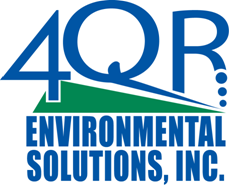Industrial Safety and Hygiene News sent out an article summarizing the summit session where Dr. Michaels spoke about OSHA's priority for the I2P2 Standard, or the Injury and Illness Prevention Program rule. In his discussion, Dr. Michaels indicates that changes required will address industries finding and fixing hazards before they can cause accidents. He emphasized that changes will require a close collaboration between mangers, team leaders, and employees. Many companies have already taken steps to train employees in accident prevention, where managers and employees watch out for others and report potential problems so they can be fixed before a major incident occurs. But there is the increased problem of sick or injured workers coming to work too soon because they don't have enough time off or are afraid of losing their jobs. Depending on the circumstances, they could be placing themselves and others at a higher risk. What changes has your company done to prevent injuries and illnesses?
For the proposed ruling, go to: osha.gov/FedReg_osha_pdf/FED20100504.pdf
Elements of the rule consist of:
1. Management duties such as establishing a policy, goal setting, planning and allocating resources, and assigning and communicating roles and responsibilities,
2. Employee participation such as involving employees in the establishment and implementation of the policies, providing access to employees for health and safety information, involving the employee in the incident investigation,
3. Hazard identification and assessment such as identifying hazards, gathering information, workplace inspections and incident investigations, hazard associations with workplace changes, determining priorities and identification tools,
4. Hazard prevention and control such as determining and priorizing what hazards must be controlled, and evaluating the effectiveness of controls,
5. Education and training, including content, effectivenss, relationship for training,
6. Program evaluation and improvement, with monitoring, evaluating performance, and determining deficiencies.
The rules require a continual plan to review and improve, after all, the workplace is continually changing. Communication will be essential in this plan. People are different in how they train, how they work with others, yet everyone can bring something of value into the program. Getting people to communicate requires team collaboration skills that have often been challenging. What challenges does your company face in meeting this proposed plan?

No comments:
Post a Comment